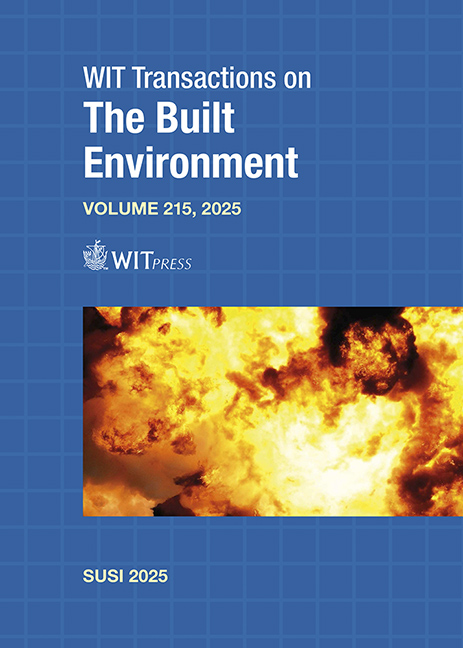DEVELOPMENT AND TESTING OF A COMBINED HEAT, AXIAL LOAD AND LOW IMPACT TESTING RIG
Price
Free (open access)
Transaction
Volume
215
Pages
12
Page Range
141 - 152
Published
2025
Paper DOI
10.2495/SUSI250131
Copyright
Author(s)
LAURENCE G. CLOUGH, ZANA KURDO
Abstract
The effect of combined static, impact and thermal loads on structures is a relatively little-known area of research with large potential applicability to sectors including defence and energy. In order to study the effect of these combined loads on structural elements, it is important to conduct controlled laboratory testing in order to validate computational analyses. There are currently few or no testing apparatus which are able to repetitively test structural elements to combined heat, axial and impact loads at a low cost. This paper details the development of a bespoke combined low-impact testing rig capable of testing 500 mm long, 100 mm wide structural elements. The rig can apply combined load sets including a thermal load (up to 400°C) an axial load (up to 150 kN) and an impact load from a 7.5 kg drop weight. For the developmental testing 500 mm long, square and rectangular concrete sections were tested as part of a wider study into the performance of concrete containing hybrid polypropylene (PPE) and steel fibres at high temperatures. Recorded results from the study include external and internal concrete temperatures via thermo-couples, longitudinal strains and vertical deflections. Conclusions regarding the suitability of the bespoke testing rig to impart the combined load sets on structural columns are presented along with discussions on the effects of the hybrid fibres in concrete columns. The study found that the rig is able to impart the combined load sets effectively and accurately enabling multiple repeated testing on elements at a low cost. The presence of PPE fibres allowed the concrete to reach higher temperatures without spalling and improved its overall resistance.
Keywords
impact, thermal, axial load, concrete, polypropylene fibres





